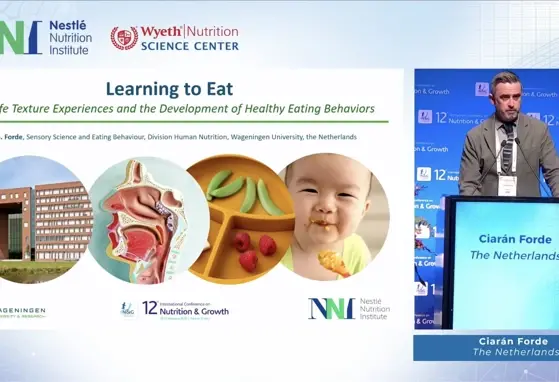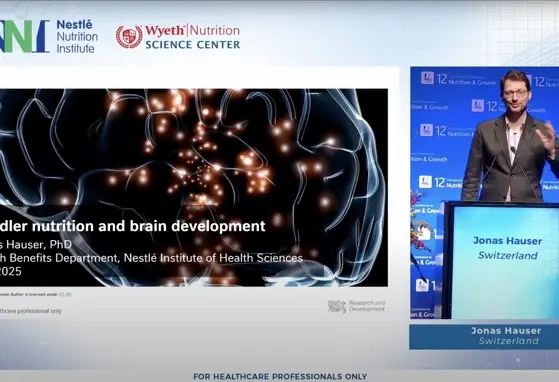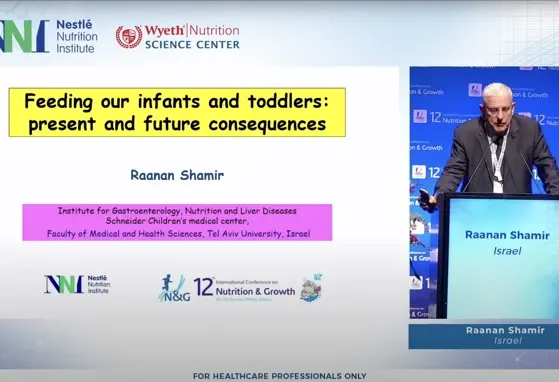Breast milk components and their health functions: the science so far
Paediatric experts have reviewed the nutritional constituents that have thus far been identified in human breast milk, along with their associated health benefits. Advanced analytical technologies such as next-generation sequencing have enabled unprecedented exploration of human breast milk and expanded research on its various health benefits. Nevertheless, breast milk is a complex system of bioactive components, many of which have not yet been identified, and others which have only been investigated at the preliminary level.
The current review paper, published in the journal Nutrients, examined some of the components and the literature on their health science. The authors categorised these components in four groups: macronutrients, immunologic components, micro-organisms (or the ‘microbiome’) and exosomes and microRNA.
Macronutrients: protein, carbohydrates and fat
Carbohydrates account for 7% (60-70g/L) of milk and 40% of the total calorie reserve. Lactose is the main carbohydrate in breast milk. It is the major contributor to the osmolality of breast milk and aids the absorption of oligosaccharides, minerals and calcium.
Protein, which accounts for 1% (8-10g/L), is composed of whey, caseins and various peptides, providing crucial amino acids for infant growth and development as well as bioactive proteins and peptides.
Breast milk contains 3.5-4.5% fat, of which 95-98% is in the form of triglycerides. Accounting for 50% of an infant’s nutritional supply, fat is the most important macromolecule for infant growth and development of the nervous system.
Immunologic components
Immunologic proteins include α-lactalbumin, lactoferrin, lysozyme, and secretory immunoglobulin A (sIgA), which are all whey proteins, highlighting the essential role of whey protein in immune protection at birth.
Only about 10% of the sIgA ingested is absorbed by the intestine, reflecting sIgA’s function of delivering acquired immunity from mothers to the newborn. sIgA molecules also prevent pathogens from binding to the intestinal mucosal surface and may influence the pathogenesis of necrotizing enterocolitis.
Lactoferrin is an antimicrobial compound with a high affinity for iron. It exerts a bacteriostatic activity against iron-requiring pathogens and bactericidal activity against some pathogens. It also affects the production and expression of various cytokines that affect the immune system.
Lysozyme inhibits the propagation of pathogenic bacteria via its synergistic action with lactoferrin.
Several studies have also suggested lysozyme has the potential to protect infants from intestinal inflammatory insult with necrotizing enterocolitis.
α-lactalbumin, another predominant whey protein, is essential for lactose biosynthesis and facilitates the absorption of trace elements and minerals.
Additionally, breast milk contains cytokines such as tumor necrosis factor-α, interleukin (IL)-1β, IL-6, IL-8, IL-10, interferon-γ, and transforming growth factor-β, which provide immunomodulation and passive protection, reducing the likelihood of infection.
Human milk oligosaccharides (HMOs) are another important component in the formation of neonate immunity. These serve as prebiotics and metabolic substrates, supporting the growth of beneficial bacteria and host defence, and protect infants from pathogens by inhibiting their adhesion to the intestinal mucosa. Additionally, preclinical studies support the preventative effects of HMOs against necrotizing enterocolitis.
The breast milk microbiome
From proving the presence of commensal bacteria in breast milk in the early noughties, science has moved on to identifying the types of bacteria and the role that the breast milk microbiome plays in maternal and infant health.
The first next-generation sequencing study to investigate the breast milk microbiome suggested there is a core gut bacteria microbiota universally present in breast milk that accounts for half of the microbial population. Subsequent studies confirmed that this contained 12 genera, with Staphylococcus and Streptococcus among the most predominant, although there have been discrepencies in the findings.
The origins of the bacteria have also yet to be determined. The accepted hypotheses are contamination from the surface skin and infant’s oral cavity and translocation through the enteromammary pathway.
Relationship between microbiome and human health
It is now widely accepted that the breast milk microbiome contributes to the gut colonisation of the infant, but is not yet known which bacteria play a major role in immune development and beneficial symbiosis.
Some evidence supports the assumption that the relative abundance of Bifidobacterium is related to immune development. A systematic review of 248 studies compared the composition of breast milk in healthy mothers versus those with an infection. Bifidobacteriumand Lactobacillus were found to be linked to the absence of infection. While these two types of bacteria have a long history as the most common and safely used probiotics, the authors expect that new probiotic strains will be isolated that are better transferred to the gut and show higher efficacy.
There is also growing interest in finding links between breast cancer and the microbiome. One study showed differences in the bacterial composition of breast tissue between healthy women and those with breast cancer. Escherichia coli and s.epidermidis, isolated from cancer patients, were shown to induce DNA double-stranded breaks.
Exosomes and miRNA
Exosomes identified in surrounding body fluids exhibit various health effects by transporting bioactive molecules, such as DNA, mRNA, microRNA (miRNA), lipids, and proteins. Milk-derived exosomes protect intestinal epithelial cells from oxidative stress by regulating cell proliferation and inflammation and exert various functions in immunomodulation and cancer. One study indicated that breast milk exosomes promoted the proliferation of normal colon epithelial cells without influencing the growth of colonic cancer cells.
Breast milk is rich in miRNAs, short, non-coding RNAs of 18 to 25 nucleotides in length, involved in the development, differentiation, proliferation, metabolism and death of cells and tissues. Each miRNA has been shown to regulate the expression of multiple genes. Some of the tens of thousands of known species are reported to be involved in cancer generation, and are emerging as possible biomarkers for diagnosis, treatment and prognosis of various cancers.
The authors said that further research on miRNA and clinical approaches in humans can be expected to provide future therapeutic applications in cancer, infections and neonate diseases.
If you liked this post you may also like


Learning to Eat: Early life texture experience in the development of eating behaviors and dietary patterns


Feeding our infants and toddlers: present and future consequences